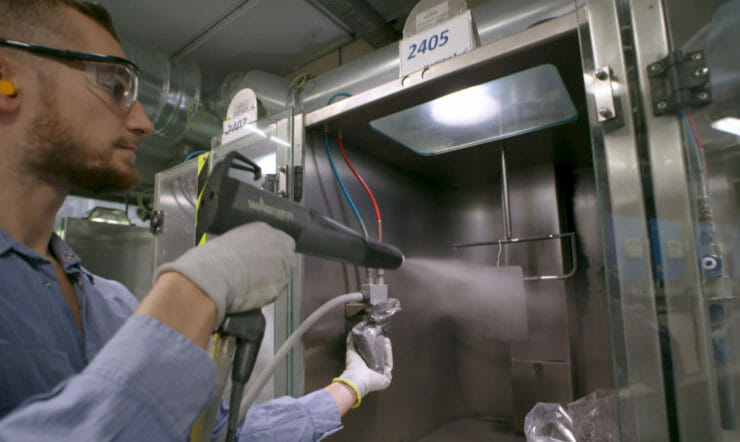In the Azure “Here’s how” Series we dive into the ins and outs of migrating business applications to the Azure cloud and the integration of AI. Certified partners, Microsoft experts, and clients share their insights, best practices, and use cases to help you set up a successful migration trajectory and achieve AI success. This time we are in conversation with Robert Roosjen, Microsoft’s Lead Azure Cloud Specialist, about the key factors for a successful migration.
The right migration strategy and other key factors for cloud success
We spend most of our time and money on making sure that our applications keep running, especially those applications that are mission-critical. The remainder of our resources is left for innovation and modernization. Ideally, this divide would be the other way around. Migrating our data and applications to the cloud can offer a wide range of opportunities to optimize efficiency and boost innovation. But where do you start?
Mission-critical applications
Mission-critical applications are the applications that are most crucial to your organization’s performance and, in some cases, society at large. These applications must always be stable and up and running. Robert explains: “Some prime examples are applications used by railways, water utilities, energy companies, and governments. But every organization has these mission-critical apps. Functional additions are often only realized once the stability of the app can be guaranteed. After all, when these apps fail, the consequences can be enormous.”
Although running applications in your own on-premises data center might seem safe, you will have to make sure that your data center lives up to the latest security standards, the environment needs to be maintained, and software needs to be updated. This can be very time-consuming and costly. It might seem scary to migrate these mission-critical applications to the cloud at first, but there are many benefits to cloud migration. And “Migrating to the cloud does not only give you access to the latest technology, but it also saves you time. It provides access to the world of serverless computing. One in which you only focus on the code and no longer need to worry about the server and infrastructure. The time you save, you can spend on innovation instead.”
Determining your cloud migration strategy
There are multiple ways to migrate to the cloud. From the ‘lift and shift’ approach, to rehosting and modernizing applications. With a ‘lift and shift’ approach, the only thing that changes is the location of your application – you move it the cloud without making any other changes. If you decide to rebuild applications, you build an entirely new functionality directly in the cloud.
The migration strategy is often determined based on technical decisions. But best practice shows that it is more beneficial to base the migration trajectory on the business value of the application. With a business-driven migration strategy you can also ensure a great collaboration between IT and the business. “For an application that is not used in the primary business processes, such as an app for managing parking, you want to spend little time and money. In this case, a rehost would be the best approach. Applications that belong to your organizations ‘crown jewels’, ensuring growth in business and customer satisfaction, you want to develop and innovate quickly. The migration path ‘rearchitect’ or cloud native development would fit best here.”
How you set up your cloud architecture also depends on the required reliability and resiliency. “Such factors are integrated in our ‘Microsoft Mission Critical Framework’ to help guide migration processes.” Robert continues: “Ensuring reliability is essential to maintaining business continuity and user satisfaction. This concerns applications’ functionality, availability, and scalability. Resiliency, on the other hand, concerns applications’ ability to keep operating and recover quickly from failures, interruptions, or unexpected events.” The required Service Level Agreement (SLA) also comes into play when setting up your cloud architecture. “It makes a big difference if the SLA has a 99.9% or 99.99% uptime.”
But the migration process doesn’t end with figuring out the required technology and architecture. You also need to set up the right governance. In other words: now that you have migrated everything to the cloud, how do you keep everything running? “It is important to manage your end to end well. We have a separate business unit that delivers cloud support to our clients. For a mission-critical migration, we even offer an additional service with faster response rates.”
Unleashing innovation
The benefits of the cloud are the same for mission-critical and other applications. You can go serverless, infuse applications with AI, enhance scalability, and access the benefits of machine learning and IOT. But above all, you can unleash limitless innovation. “Once you have migrated to the cloud, you can innovate and develop new functionality much quicker than before. Previously, you first had to raise a request and find an available server before you could do anything. This could take months. In the cloud, you can innovate instantaneously.”
Final tips for successful migration
Don’t try to migrate to the cloud overnight. If we want to start spending most of our time on innovation and modernization, we need to have the right foundation first. Not only does your technology need to function properly, but you also need the right security, operations, and governance. Robert: “Do not forget the business side. Cloud migration must be business-driven and the cloud should not be a goal in and of itself. It should be a means for those who want to create and innovate.”
In other words, you need the right sponsors with the right ownership for a migration process to be a success. The higher up, the better. And make sure it has the right priority. Identify what drives your company or organization. Connect business decision-makers with IT professionals. Define ownership, build support, and set priorities. “Once all is in place, you are ready to embrace the transformation and unlock the full potential of the cloud.”
Want to learn more about Azure cloud migration and AI? Here you will find more of our Azure “Here’s How” Blog Series, customer cases, whitepapers, and training materials. Embrace the future of digital transformation and unlock the true potential of your team and ideas!






























